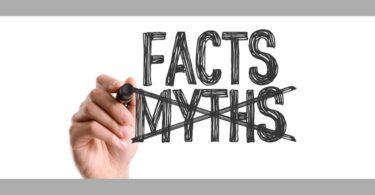What is Homeopathy?
Homeopathy is a medical science developed by Dr. Samuel Hahnemann (1755-1843), a German physician. It is based on the principle that “like cures like”. In simple words, it means that any substance, which can produce symptoms in a healthy person, can cure similar symptoms in a person who is sick. This idea is referred to as the “Law of Similars“, and was understood by Aristotle and Hippocrates and mentioned in ancient Hindu manuscripts. It was Hahnemann, however, who turned it into a science of healing.
Here are examples of this principle:
a. An onion is a substance which makes your eyes water and your nose burn. If you are having an attack of hay fever with watering eyes and a burning nose, a homeopathic remedy made from onion can relieve it.
b. Poison ivy causes redness, intense itching, burning, blistering and sometimes stiff muscles. Homeopathically it has been used for everything from herpes and burns to eczema and arthritis.
c. When you are stung by a bee you feel a burning, stinging pain and the tissues surrounding the area swell up. Some relief is gained from applying cold to the area. If you had swollen tonsils with burning and stinging pain relieved by cold, a homeopathic remedy prepared from the same source could cure.
Currently there are three thousand substances used as homeopathic remedies to treat everything from colds and cough to arthritis and cancer.
A second principle of homeopathy is that you should give the least amount of medicine necessary to evoke a healing response. This is called the “Minimum Dose”. We all know that normal medicines can cause side effects, leading to much suffering or even death. In an effort to prevent side effects, Hahnemann began successive dilution with agitation of his medicines, to find the point at which they would be therapeutic, but not toxic.
Homeopathy’s Track Record
You may be wondering what kind of track record homeopathy has for treating serious diseases. A look at the past will establish that homeopathy has proven itself reliable and is often much more effective than conventional treatment.
The worldwide influenza epidemic of 1918 killed 22 million people worldwide and 500,000 in the U.S. The death rate was 30% or higher for those treated conventionally, while homeopaths cured an amazing 98% of their cases!
During the Cholera and Typhus epidemics in Europe from the 1860’s to early 1900’s, people using homeopathy had survival rates 50% or greater than those treated by conventional medicine.
In an epidemic of Typhus in Leipzig (1813), Dr. Hahnemann treated 180 cases of Typhus, losing only two patients. Mortality rates for conventional treatment were over 30%.
During the cholera epidemic of 1849 in Cincinnati, with survival rates between 40 -52%, those treated by homeopathy had a 97% survival rate. These results were published in the local newspapers.
Homeopathic Prevention
Homeopathy has also proven itself invaluable in preventing illness. In the 1957 polio epidemic in Buenos Aires, the homeopathic remedy Lathyrus was given to thousands of people. Not one case of polio was reported in these individuals.
In a 1974 epidemic of meningicoccal meningitis in Brazil, 18,640 children were given a homeopathic remedy for prevention. Only 4 cases of meningitis occurred in these children.
In the smallpox epidemic of 1902 in Iowa, the homeopathic remedy Variolinum was given preventively to 2,806 patients of 15 doctors. The protection rate was 97%.
History of Homeopathy
After his first experiments in 1790, Hahnemann tried many other substances, learning what symptoms they would produce and therefore, what symptoms they could cure. He taught others his new method of healing and soon homeopathy spread from Germany to the rest of the continent. By 1829, Hahnemann was famous throughout Europe. He produced amazing cures in some of the worst epidemics of the time. During a typhus epidemic in 1813, Hahnemann cured 179 of 180 cases. During epidemics, survival rates in Homeopathic hospitals far surpassed those in conventional ones. Because of its success in healing the most serious diseases without harm to the patient, homeopathy was soon practiced all over the world. The wealthiest families and the royalty of Europe were early patrons of homeopathy.
Homeopathy Today
The World Health Organization estimates that homeopathy is used by 500 million people worldwide, making it the second most widely used medicine in the world.
In England, France, Germany and the Netherlands, homeopathy is included in the National Health Service.
In France, 18,000 physicians prescribe homeopathic remedies. There are seven medical schools offering post grad degrees in homeopathy and all 23,000 pharmacies carry homeopathic remedies.
In England, 42% of British physicians refer patients to homeopaths. The Royal family has used used homeopathy for three generations. There are currently five homeopathic hospitals, and the oldest, the Royal London Homeopathic Hospital, has been there for 100 years.
India has over 70,000 board certified homeopathic physicians, hundreds of homeopathic hospitals and clinics and many homeopathic medical schools.
In Germany , 20% of Physicians prescribe homeopathic remedies.
In the Netherlands, 45% of physicians consider homeopathy effective.
Homeopathy is also practiced in Vienna, Scotland, New Zealand, Australia, Canada, Russia, Brazil, Argentina, Mexico, Pakistan, Greece, Belgium.
Well known people who have used homeopathy
The Royal family since 1830’s. Queen Elizabeth is patron of the Royal London Homeopathic Hospital.
Mahatma Gandhi, Wm.James, Henry Wadsworth Longfellow, Daniel Webster, Harriet Beecher Stowe, Samuel F. Morse, John D.Rockefeller,
Gandhi: “Homeopathy ..cures a larger percentage of cases than any other method …and is beyond all doubt safer, more economical and the most complete medical science“.
Homeopathy Research
Research (small sample)
Below are many blind and double blind studies published in respected peer reviewed journals such as Lancet, British Medical Journal, British Journal of Clinical Pharmacology.
If you have to debate with skeptics, you could also read this: https://hpathy.com/homeopathy-papers/going-armed-into-battle/
British Medical Journal 302-(Feb 1991 ):316-323 Kleignen, J et al-Clinical Trials of Homeopathy- Published review of 105 clinical trials with homeopathic remedies. Eighty one demonstrated effectiveness.
Glasgow Homeopathic Hospital- 1986-Homeopathic remedies proved 6 times as effective in controlling asthma as did placebo.
French Study-Cahrs de Biotherapie 94 (April 1987) 77-81-Double blind –Caulophyllum– Difficult deliveries–Remedy reduced labor time and decreased decreased abnormal labor. Labor time 5.1 hrs average in treated grp. but 8.5 hrs in placebo grp.
Also, 11.3% of treated grp had abnormal labor compared with 40% for placebo group.
Research cont…
British Journal of Clinical Pharmacology-9 (May 1980):453-459- Gibson, R.G. et al-Homeopathic Therapy in Rheumatoid Arthiritis-Double blind– 82% of patients experienced some relief compared with 21% for placebo.
Shipley M. et al. -Controlled trial of Homeopathic treatment of Osteoarthritis- Lancet -1 (1983) 97-98.
British Homeopathic J.-74 (July 1985) 168-174- Homeopathic remedies inhibited viral growth in chick embryos from 50-100% depending on potency used.
J. of Pediatrics- Diarrhea-Nicaragua- Remedies show effectiveness in relieving diarrhea in children. Controlled study.
Albertini , H. et al. Homeopathic Treatment of Neuralga Using Arnica & Hypericum: Summary of 60 observations – J. of American Institute of Hom.-78(Sept.’85) 126-128 -. 76% of those given Arnica and Hypericum experienced pain relief.
German Pharmacological Journal (Arzneim. Forsch/Drug Res., 34 (1984):1791-98-
HomeopathicCombination formula reduced vertigo and nausea.
Jacque Benveniste- INSERM-(French equivalent of NIH) -1988- Demonstrated after 4 yrs research, that homeopathic potencies of Anti-IGE had biological effects at dilutions of 30c and 120c. (serum protein anti-body)
Journal of Holistic Medicine- 5 (Fall/Winter ’83)-172-75 and J. of Amer. Inst. of Hom. 61(Nov/Dec. 68): 197-212 : Nuclear Magnetic Resonance Study showed that all 23 different Hom. remedies and potencies tested had distinctive readings of submolecular activity, while placebos did not.
Homeopathy-(London 1975 W.H. Allen ), 124-125: Survey of English factory and office workers. Grp treated with hom. nosode influenzium: 6.5% got flu. In untreated grp, 19.7 got flu. Untreated group lost 8.5 times more working days.
J. Amer. Inst. of Hom. 48, #11 (Nov. 1955):327-35- Dilutions of NaCl up to 10-60
showed differences in capacitance from distilled water.
1931 Paterson & Boyd – Schick test – registers immunity after administration of high potency nosode Diptherinum.
1930’s – W.Persson- and W. Boyd 1954- rate of fermentation of starch by ptyalin and diastase is influenced by high potencies of mercuric chloride.
Reilly, D.T. et al- Is Hom. a Placebo Response?-: Controlled trial of Hom. Potency with Pollen in Hayfever as Model. Lancet 2 No. 8512 (Oct. 1986) : 881-886.
Gerhard,W. The Biological treatment of Migraines, Based on Experience- Biological therapy 5 no. 3 (June 1988) 67-71.
Research on homeopathy’s effectiveness for specific pathologies:
1. British Homeopathic J.-74 (July 1985) 168-174- Homeopathic remedies inhibited viral growth in chick embryos from 50-100% depending on potency used.
2. 1930’s – W.Persson- and W. Boyd 1954- rate of fermentation of starch by ptyalin and diastase is influenced by high potencies of mercuric chloride.
3. Endler, P.C., Pongratz, W., van Wijk, R., Kastberger, G., Haidvogl, M. Effects of Highly Diluted Succussed Thyroxin on Metamorphosis of Highland Frogs. Berlin J Res Hom 1991; 1: 151-160.
Welles, S.U., Suanjak-Traidl, E., Weber, S., Scherer-Pongratz, W., Frass, M., Endler, P.C.,
Spranger, H., Lothaller, H. Pretreatment with thyroxine (10e-8) and the effect of homeopathically prepared thyroxin (10-30) on highland frogs – a multi-researcher study. Res Compl Med / Forsch Komplementärmed 2007; 14: 353-357.
4. Betti L., Brizzi M., Nani D., Peruzzi M., Effect of high dilutions of Arsenicum album on wheat seedlings from seed poisoned with the same substance, Br Hom J 1997; 86: 86-89.
Brizzi M., Lazzarato L., Nani D., Borghini F., Peruzzi M., Betti L., A Biostatistical Insight into the As2O3 High Dilution Effects on the Rate and Variability of Wheat Seedling Growth. Res Compl Med / Forsch Komplementärmed 2005; 12: 277-83.
Binder M., Baumgartner S., Thurneysen A., The Effects of a 45x Potency of Arsenicum album on Wheat Seedling Growth – a Reproduction Trial, Res Compl Med / Forsch Komplementärmed 2005;12: 284-291.
Ramachandran C, Nair PK, Clèment RT, Melnick SJ. Investigation of cytokine expression in human leukocyte cultures with two immune-modulatory homeopathic preparations. J Altern Complement Med 2007; 13: 403-407.
de Oliveira CC, de Oliveira SM, Goes VM, Probst CM, Krieger MA, Buchi DD. Gene expression profiling of macrophages following mice treatment with an immunomodulator medication. J Cell Biochem 2008; 104: 1364-1377.
Smit E, Pretorius E, Anderson R, Oommen J, Potjo M. Differentiation of human monocytes in vitro following exposure to Canova in the absence of cytokines. Ultrastruct Pathol 2008; 32: 147-152.
Endler, P.C., Pongratz, W., van Wijk, R., Kastberger, G., Haidvogl, M. Effects of Highly Diluted Succussed Thyroxin on Metamorphosis of Highland Frogs. Berlin J Res Hom 1991; 1: 151-160.
Welles, S.U., Suanjak-Traidl, E., Weber, S., Scherer-Pongratz, W., Frass, M., Endler, P.C., Spranger, H., Lothaller, H. Pretreatment with thyroxine (10e-8) and the effect of homeopathically prepared thyroxin (10-30) on highland frogs – a multi-researcher study. Res Compl Med / Forsch Komplementärmed 2007; 14: 353-357.
Guedes J. R. P., Ferreira C. M., Guimaraes H. M. B., Saldiva P. H. N., Capelozzi V. L. Homeopathically prepared dilution of Rana catesbeiana thyroid glands modifies its rate of metamorphosis. Homeopathy 2004; 93: 132-137.
For further information on research related to homeopathy, please look at the Homeopathy Research section.
Hope now you have a good understanding about what is homeopathy, it’s history, use, research and popularity.




